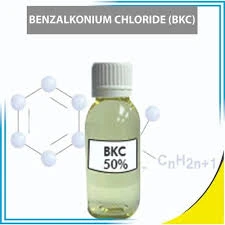Understanding the Applications and Benefits of Poly Aluminum Chloride in Water Treatment
The Role and Applications of Poly Aluminum Chloride in Water Treatment
Poly Aluminum Chloride (PAC) is a widely utilized chemical compound in water treatment processes due to its effective coagulation and flocculation properties. Its versatility and efficiency make it an essential component in both municipal and industrial water purification systems. This article explores the characteristics, benefits, and applications of PAC in various water treatment scenarios.
What is Poly Aluminum Chloride?
Poly Aluminum Chloride is an aluminum-based coagulant that is produced by the hydrolysis of aluminum chloride and involves polymerization leading to a higher molecular weight product. PAC is typically available in both solid and liquid forms and possesses a higher charge density compared to traditional coagulants like aluminum sulfate. This attribute enhances its ability to aggregate and settle suspended particles in water, thereby making it a superior choice for effective water clarification.
Characteristics of PAC
One of the noteworthy characteristics of PAC is its ability to function effectively across a wide pH range, making it adaptable to various water conditions. It generally performs well with pH levels of 5 to 8, which are common ranges in natural water sources. The rapid coagulation process initiated by PAC leads to the formation of larger flocs that can be easily removed from the water, ensuring clearer and cleaner water at a faster rate than many conventional coagulants.
Advantages of Using PAC in Water Treatment
1. Enhanced Removal of Impurities PAC is more effective in removing organic matter, color, and turbidity from water. Its high charge density allows for the aggregation of smaller particles that might not be adequately settled out when using other coagulants.
2. Reduced Chemical Dosage Due to its efficiency, PAC often requires lower dosages compared to traditional aluminum sulfate. This not only cuts costs but also minimizes the chemical footprint in water treatment processes.
poly aluminum chloride

3. Faster Settling Rates The flocs formed by PAC tend to have higher settling velocities, significantly improving the efficiency of the sedimentation process. This reduces overall treatment time and increases the throughput of water treatment facilities.
4. Less Residual Sludge Another benefit of using PAC is the reduction of residual sludge produced in comparison to other aluminum-based coagulants. This leads to less operational hassle in sludge handling and disposal, contributing to more sustainable practices.
Applications of Poly Aluminum Chloride
Municipal Water Treatment PAC is commonly used in drinking water purification plants to remove impurities and achieve regulatory standards for safe water. Its ability to perform well under varying water quality conditions makes it ideal for municipal systems that deal with different sources and contaminants.
Wastewater Treatment In industrial settings, PAC plays a crucial role in treating wastewater. It helps in the removal of suspended solids and organic pollutants before the treated water is released into the environment or reused. Its effectiveness in settling sludges reduces the volume and weight of the waste that needs to be processed.
Paper and Pulp Industry The paper manufacturing process uses significant quantities of water, leading to the generation of contaminated wastewater. PAC is employed here to clarify the process water, ensuring that it meets environmental discharge standards.
Food and Beverage Industry The food and beverage sector also utilizes PAC for water treatment, especially in processes that require high purity water. The compound helps in ensuring the microbiological safety of water used in food production.
Conclusion
Poly Aluminum Chloride is an invaluable asset in modern water treatment practices. Its superior coagulation efficiency, adaptability to varying water conditions, and various applications across different sectors underline its significance. As water quality regulations become more stringent globally, the demand for effective and efficient treatment solutions like PAC is likely to grow, making it a focal point in efforts toward achieving sustainable and safe water management. The continued advancement in PAC formulations may also lead to further improvements in its effectiveness and sustainability, ensuring its place in the future of water treatment technologies.
-
lk-319-special-scale-and-corrosion-inhibitor-for-steel-plants-advanced-solutions-for-industrial-water-systemsNewsAug.22,2025
-
flocculant-water-treatment-essential-chemical-solutions-for-purification-processesNewsAug.22,2025
-
isothiazolinones-versatile-microbial-control-agents-for-industrial-and-consumer-applicationsNewsAug.22,2025
-
scale-inhibitor-key-solutions-for-water-system-scale-preventionNewsAug.22,2025
-
organophosphonates-versatile-scale-inhibitors-for-industrial-water-systemsNewsAug.22,2025
-
scale-and-corrosion-inhibitor-essential-chemical-solutions-for-water-system-maintenanceNewsAug.22,2025





